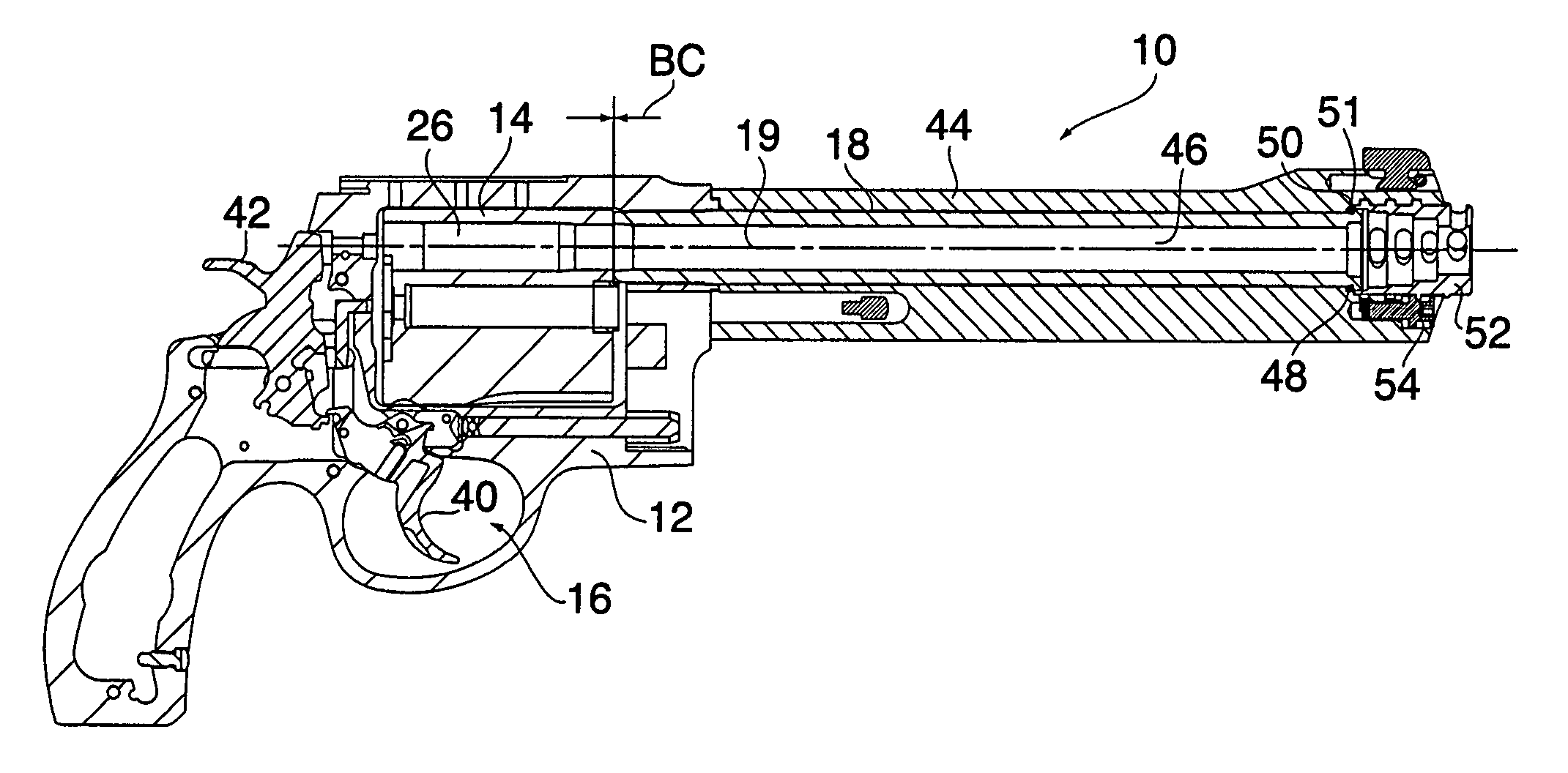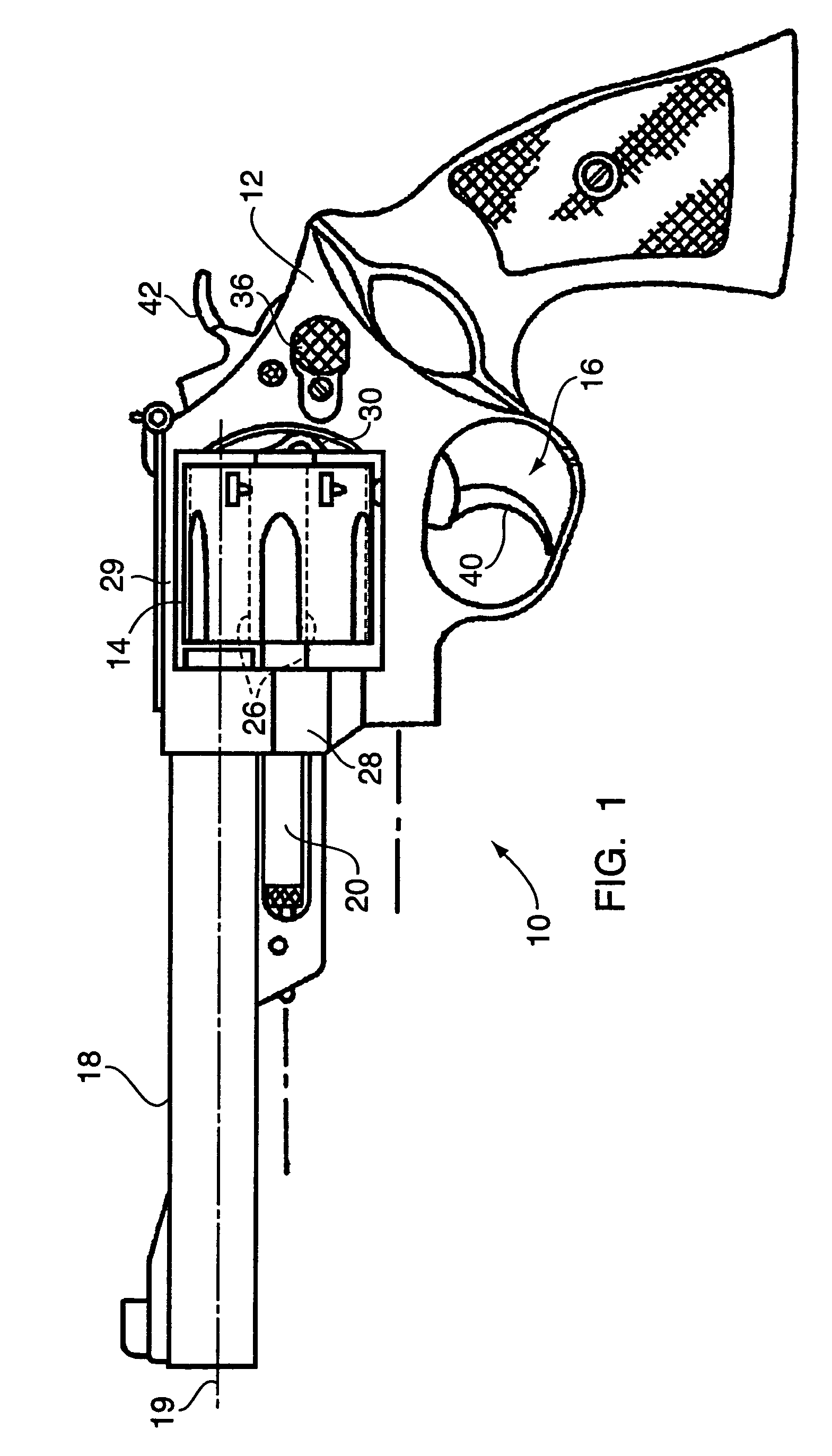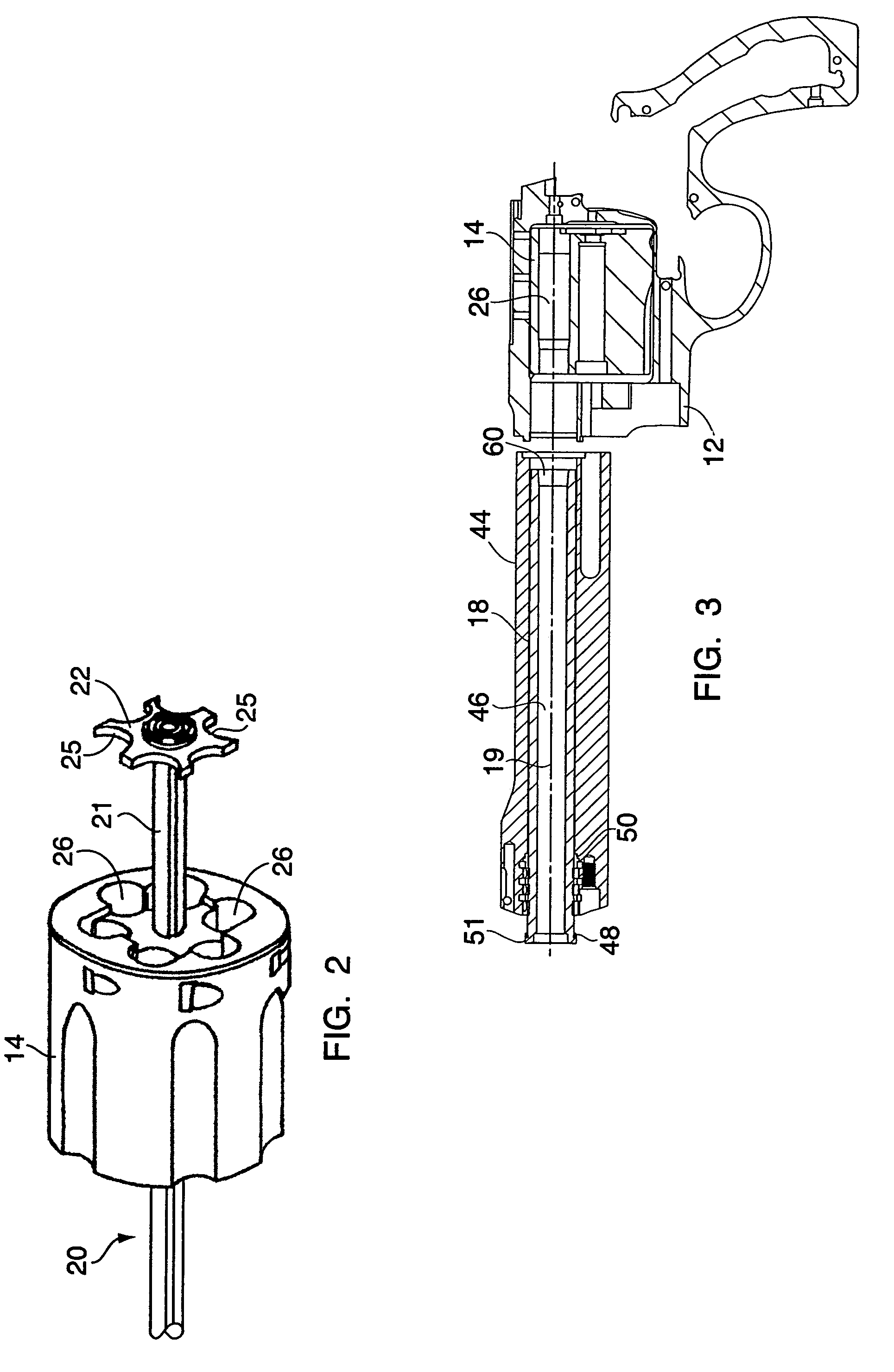Revolver for firing high velocity ammunition
a high-speed, ammunition technology, applied in the field of revolvers, can solve the problems of concomitant loss of pressure and bullet velocity, increased production costs, and increased production costs, so as to reduce the amount of erosion, prolong the barrel life of the handgun, and smooth the translation
- Summary
- Abstract
- Description
- Claims
- Application Information
AI Technical Summary
Benefits of technology
Problems solved by technology
Method used
Image
Examples
Embodiment Construction
[0027]Referring to FIG. 1, one exemplary embodiment of a firearm incorporating the present invention is shown generally at 10 and is hereinafter referred to as “firearm10.” The firearm 10 is preferably a revolver (as described in U.S. Pat. Nos. 6,330,761 and 6,523,294, which are incorporated herein by reference) that includes a frame 12, a cylinder 14, a firing mechanism 16, and a barrel 18. A firing axis 19 extends coaxially with the barrel 18. High velocity ammunition is the preferred type of ammunition for use in the firearm 10, such ammunition typically being capable of attaining bullet muzzle velocities of about 2,500 feet per second or greater.
[0028]The cylinder 14 is pivotally mounted in the frame 12 and includes an ejector 20, a ratchet 22, and a plurality of chambers, two of which are shown at 26. The chambers 26 are configured to receive and align cartridges with the barrel 18. The cylinder 14 is pivotally mounted on a yoke 28 that is attached to the frame 12. A top strap ...
PUM
 Login to View More
Login to View More Abstract
Description
Claims
Application Information
 Login to View More
Login to View More - R&D
- Intellectual Property
- Life Sciences
- Materials
- Tech Scout
- Unparalleled Data Quality
- Higher Quality Content
- 60% Fewer Hallucinations
Browse by: Latest US Patents, China's latest patents, Technical Efficacy Thesaurus, Application Domain, Technology Topic, Popular Technical Reports.
© 2025 PatSnap. All rights reserved.Legal|Privacy policy|Modern Slavery Act Transparency Statement|Sitemap|About US| Contact US: help@patsnap.com



